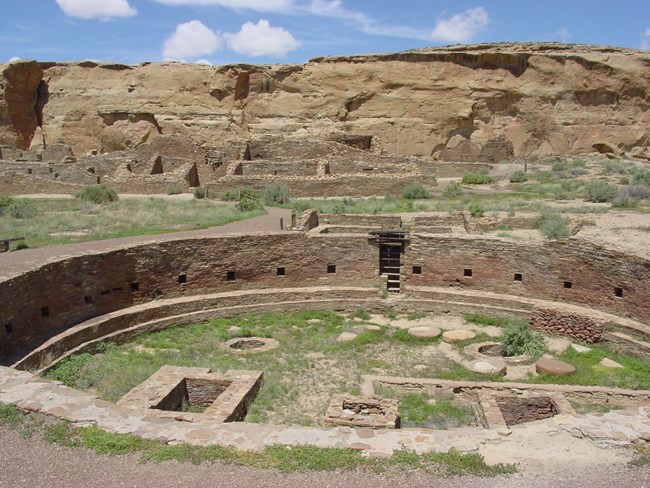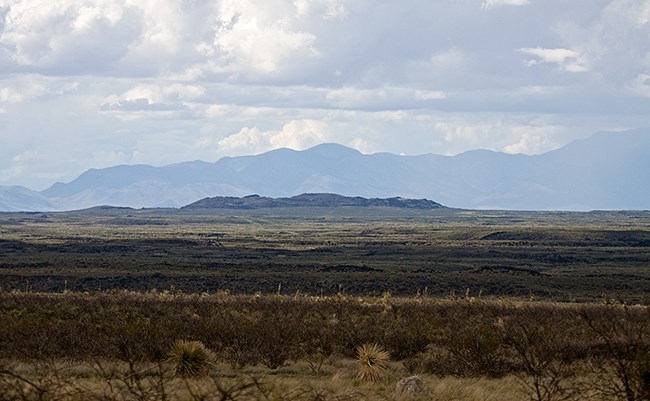Last updated: July 23, 2020
Article
Chaco Culture: World Heritage Site

NPS photo.
Chaco Culture World Heritage Site in the center of northern New Mexico lies at the core of an ancient American Indian civilization begun by people referred to as "ancestral Pueblo" or "Chacoan." The Chaco complex and its extensive system of masonry structures and roads were begun as early as 850 A.D. and flourished for several centuries. As the economic and religious center for the surrounding region, the ancestral Pueblo constructed masonry buildings here with rooms twice the size of Chacoan structures in other areas. The buildings of Chaco Canyon are by far the earliest examples of the modern Pueblo Indian building tradition found in other areas of New Mexico and Arizona. This type of construction continues to the present day among the Pueblo Indians of the southwestern United States. The World Heritage Site consists of Chaco Culture National Historical Park, Aztec Ruins National Monument, and five smaller sites managed by the Bureau of Land Management.
The buildings here represent the highest technical excellence, craftsmanship, and coordination of effort in the prehistoric Chacoan area. Chacoan builders used very simple materials to erect walls which still stand over five stories. The scale and geometric design of these buildings is unique in the Southwest. At Chaco, the prehistoric social system may have been its peoples' most remarkable achievement. Chaco dominated and altered the traditional social, economic, and religious practices over a large area in a marginal environment.
Chaco Culture National Historical Park and Aztec Ruins National Monument are units of the National Park Service. Along these parks' trails are the “great houses” like Una Vida & Petroglyphs and Hungo Pavi, and the highly significant Pueblo Bonito. Each site uniquely captures the history and influence of the Chaco people and their descendants. Pueblo Bonito, at Chaco Cultural National Historical Park, once served as the center of Chaco life and culture. This D-shaped building took decades to build, ultimately standing four to five stories tall with over 600 rooms. Pueblo Bonito was the focus of ceremonial functions, administration, trading, storage, hospitality, communications, astronomy, and burial of the honored dead for the Chaco people. Aztec Ruins National Monument protects three additional great houses that represented the later period of Chacoan cultural fluorescence. At Aztec Ruins, visitors can enter a reconstructed great kiva and wander through a series of original rooms with 900-year old roofs still intact.

At Chaco Culture National Historical Park, visitors are encouraged to begin with the Visitor’s Center, which includes a museum, theater, bookstore, and gift shop. From there, a 9-mile paved loop road accesses six major sites within the historic park, including Pueblo Bonito. From April to October, the Chaco Night Sky Program presents astronomy programs, solar viewing, and telescope viewing of the spectacular dark sky. The park sponsors other programs, including special events and hikes, from May to October.
Aztec Ruins National Monument provides ranger tours and talks from May through September, and a Junior Ranger program is offered year-round. Cultural demonstrations take place many weekends during the summer months. Aztec Ruins hosts an Earth Day Celebration every April and and an Evening of Lights display every December.
Chaco Culture Park Page: https://www.nps.gov/chcu/index.htm
UNESCO Page: https://whc.unesco.org/en/list/353/
Aztec Ruins: : https://www.nps.gov/azru/learn/management/unesco-world-heritage-designation.htm
